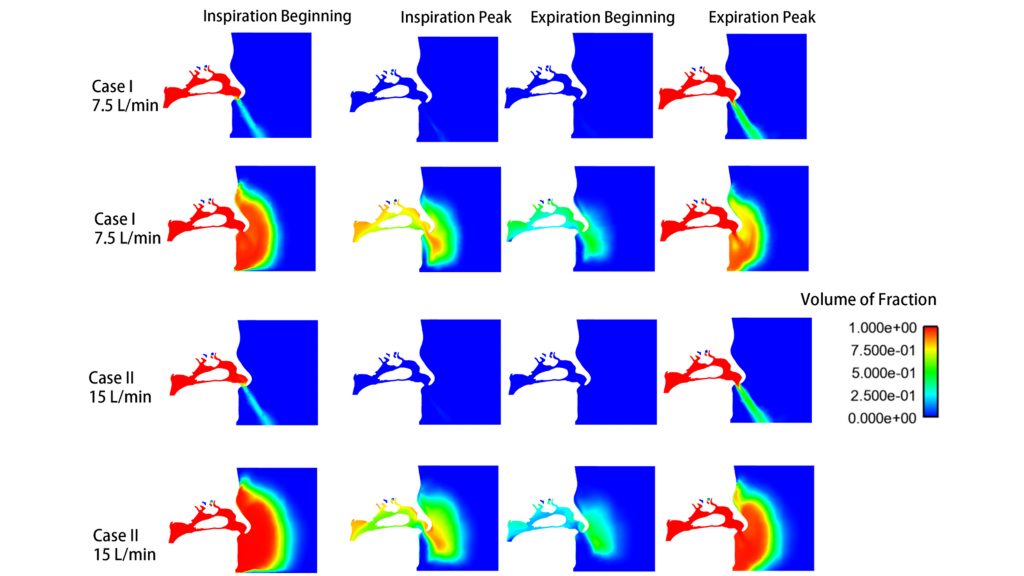From the Journal: Physics of Fluids
WASHINGTON, November 24, 2020 — The use of face masks to help slow the spread of COVID-19 has been widely recommended by health professionals. This has triggered studies exploring the physics of face mask use and disease transmission, as well as investigations into materials, design, and other issues affecting the way face masks work.

In Physics of Fluids, by AIP Publishing, investigators looked at research on face masks and their use and summarized what we know, to date, about the way face masks filter or block the virus. They also summarize design issues that still need to be addressed.
One key aspect of face mask function involves the size of fluid droplets expelled from the nose and mouth when a person talks, sings, sneezes, coughs, or even simply breathes. Larger droplets, with sizes around 5-10 microns, are the most common. These droplets are still quite small, however. To compare, a human hair is about 70 microns in diameter.
Even smaller droplets, those below 5 microns, are possibly more dangerous. These can become aerosolized and remain suspended in air for long periods. Among the many types of masks in use (cloth masks, surgical masks, and N95 masks), only N95s can filter out aerosol-sized droplets.
The performance of face masks worn for many hours, such as by health care or other essential workers, impact how effective overall mask wearing can be. Thermal comfort is an important issue, especially in hot and humid environments.
The investigators found face masks made of hybrid polymer materials could filter particles at high efficiency while simultaneously cooling the face. The fibers used in these special masks are transparent to infrared radiation, allowing heat to escape from beneath the mask.
“There could be some relation between breathing resistance and the flow resistance of the face mask which will need to be studied for a face mask-wearing interval,” said author Heow Pueh Lee. “Also, the environmental condition in the compartmental space within the face mask will need to be more accurately quantified using miniaturized sensors and the development of human replicas for such studies.”
The investigators also reviewed epidemiological studies aimed at discovering whether face masks reduce the effective reproduction number. If the reproduction number drops below 1, the epidemic stops spreading. One study used COVID-19 data from New York state.
“The results suggest that the consistent use of efficient face masks, such as surgical masks, could lead to the eradication of the pandemic if at least 70% of the residents use such masks in public consistently,” said author Sanjay Kumar. “Even less efficient cloth masks could also slow the spread if worn consistently.”
###
For more information:
Larry Frum
media@aip.org
301-209-3090
Article Title
Authors
Sanjay Kumar and Heow Pueh Lee
Author Affiliations
National University of Singapore
